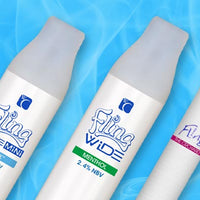Do you remember the Trix cereal tagline “No silly rabbit, Trix are for kids”? Do you remember being forbidden, or even forbidding yourself, from buying and/or enjoying Trix as an adult because of that tagline? Of course not! The fruit-packed flavors found in Trix are delicious no matter how old you are! We may be adults, but that doesn’t mean we don’t enjoy the same tasty treats we loved as kids. So why do sensationalist headlines continue to accuse e-cig companies of using flavored e-liquids to lure children into vaping, so much so that state legislators across the country have suggested a full ban on flavored e-liquids? Here is why this is wrong on so many levels.
The Truth About E-Cig Flavors

While it is true that the majority of smokers who switch to electronic cigarettes originally look for a flavor closely resembling the tobacco flavor of their favorite traditional cigarettes, we can confidently say many of those smokers eventually move on to try different flavors only to discover they enjoy the nontraditional flavors even more. Evidence of this truth is supported by a study headed by researcher and cardiologist Dr. Konstantinos Farsalinos, which concluded “flavors play a major role in the overall experience of dedicated users and support the hypothesis that they are important contributors in reducing or eliminating smoking consumption.” Therefore, being offered a variety of e-liquid flavors helps smokers move away from the taste of traditional tobacco to more enjoyable flavors that can actually help reduce the temptation to fall back into smoking traditional cigarettes. As the e-cig user becomes more accustomed to the more enjoyable flavors, the taste of traditional cigarettes becomes even less appealing, which in turn increases the chances of kicking smoking for good.
The Truth About White Cloud’s Flavors

We may not be able to say for sure there aren’t e-cig companies or small vape shops out there that are willing to sell to anyone just to make a quick buck, but we can confidently say that, not only do we make every effort to avoid selling to minors, we also make our e-liquid flavors for adults in search of nicotine alternatives. Each year, White Cloud Electronic Cigarettes sends a survey to our customers to find out more about what they really want. In 2014, “more e-liquid flavors” found its way to the top of the list. While there are those vapers who will find a flavor and stick with it, an overwhelming amount of vapers do enjoy having a variety of flavors available at their fingertips. So does White Cloud offer vape flavors in an effort to appeal to children? No way! We offer our vast variety of flavors because our customers asked us for more options and we listened.
The Truth About Advertising
There are a plethora of options when it comes to advertising, from television ads and radio spots to social media platforms; but what has been long proven to be the best form of advertising? The answer is “word-of-mouth” advertising. We are all consumers in some form and we are living in a world of what seems to be endless options, from at least a dozen different shampoo brands lined up on grocery store shelves to an entire aisle dedicated to coffee. With all of these options, how do we choose? The simple answer is, you guessed it, “word-of-mouth” advertising.
We all may be more inclined to try a product because our family or friends have already raved about it, or we may make a decision to buy a product online only after first reading over the hundreds of reviews. This same “word-of-mouth” advertising can also apply to smoking and vaping. Several studies on teen usage of tobacco have indicated that kids start smoking due to only a couple of reasons: they either come from a family of smokers or they fall under peer pressure from friends and classmates.
None of the studies conducted could firmly conclude that teens started smoking or vaping due to advertisements; however, there was one study that claimed to have found “direct evidence” that e-cig ads are recruiting teen vapers. But, there is a catch: this study was based on a very unlikely scenario.
The Truth About “Direct Evidence”

In 2014, researchers at RTI International conducted a study that claimed to have resulted in “direct evidence” that e-cig advertising convinces minors to take up vaping. This study included a sample of 3,655 U.S. adolescents aged 13–17 years who had “never tried e-cigarettes” based on an initial questionnaire. The participants were split up into two random groups. The first group was subjected to four consecutive e-cig ads, followed by a series of questions about their willingness to try vaping. The second group was shown the four consecutive ads after first answering the series of questions. Apparently, there were also some variations to the participants in each group. The first group actually included adolescents who were already interested in vaping, some of which were already smokers, which of course would lead to more skewed results.
The end results of the study were minimal and definitely not enough to conclude the study links to any kind of “direct evidence”. According to a breakdown of the study results from ecigarettereviewed.com, 8.3 percent of participants in the first group said they’d try vaping soon. This percentage increased to just 11.5 percent after viewing the ads. This means that 88.5 percent were still not interested in vaping even after viewing the consecutive ads, while the total percentage of youths in the study who were affected by the ads was only 3.2 percent. These numbers are still not completely accurate considering the percentage of youths who said they’d “probably” try vaping was lumped in with the percentage of those who said they would “definitely” try vaping. Now add that on to the fact that this study was conducted under a very unlikely scenario.
Not only do the majority of e-cig companies advertising on television set their target market to at least an 85 percent adult audience, they also rarely, if ever, run four ads in a row for the same type of product. Let’s think about this for a minute. If we saw four consecutive television ads for the same type of product, then yes, there could be a small possibility that we may be more inclined to consider buying the product. But, chances are we would most likely become annoyed with the ads and either stop paying attention or simply change the channel.
The Truth About “Targeting Children”

Related: How White Cloud Prevents E-Cig Sales to Minors
Many of us may remember breaking into our parents’ liquor cabinets when they weren’t home, or drinking wine coolers we found in the fridge, then replacing the liquid with cherry juice with the crazy idea that our parents wouldn’t notice. And some of us probably even snuck a cigarette out of the pack of cigarettes our parents left out in the open, just because we wanted to know what all the fuss was about. This is reality–not to mention human nature. As humans, if we are told we cannot do something, we are given even more reason to do it, even if we are aware of the potential consequences or if we weren’t even interested in doing it in the first place. The same goes for kids, so the best way to approach the issue of e-cigs falling into the hands of minors is to make sure we explore all avenues of preventing them from buying them—not by punishing adult vapers with the implementation of an e-liquid flavor ban, as noted in a letter to a New York councilman submitted Dr. Konstantinos Farsalinos, “I understand the legitimate concern about attracting youngsters. However, it is questionable, both ethically and legally, whether a group of the society (smokers) should be deprived from the ability and the right to choose a significantly less harmful product because of a legitimate but unsubstantiated (so far) concern.”
The Truth About Flavor Bans

Several states, including Illinois, New York, and Connecticut, have all proposed e-liquid flavor bans within the last year and critics and legislators still continue to push the proposed bans to be included in the FDA’s Deeming Regulations. These proposed bans are obviously an attack against the electronic cigarette industry. If they aren’t, then where are all of the other proposed flavor bans?
If critics and legislators are pushing for an e-cig flavor ban, then what about a flavored alcohol ban? From banana-flavored rum to cereal-flavored vodka, flavored liquors are becoming more and more popular in bars across the world. Let’s take a look at Loopy Vodka by the brand Three Olives: this flavored vodka was inspired by the “kid cereal” Fruit Loops and the bottle even features an image of the deliciously fruity o’s found in a bowlful of Fruit Loops. Was this flavored vodka designed to attract children? Of course not! What would be the point? Kids can’t go sit at a bar and order themselves drinks, nor can they even enter a liquor store. So, why was this flavor even created? Because adults enjoy Fruit Loops, too!
Related: White Cloud Responds to FDA Regarding Proposed Rule
So, if we’re going to go all in and start banning adult products with flavors that kids just might enjoy, we may as well pass an adult age restriction law on cereal, candy bars, snack cakes, cotton candy and any other tasty treat that is apparently only meant for kids. Just imagine checking out at a grocery store and being told, “I’m sorry, but you’re too old to buy this box of Twinkies.” Or imagine being asked to show proof of parenthood when buying a box of Lucky Charms, then being denied the purchase if you can’t prove you won’t be the one enjoying those deliciously crunchy little marshmallows…yeah, that will never happen and neither should an e-liquid flavor ban.






